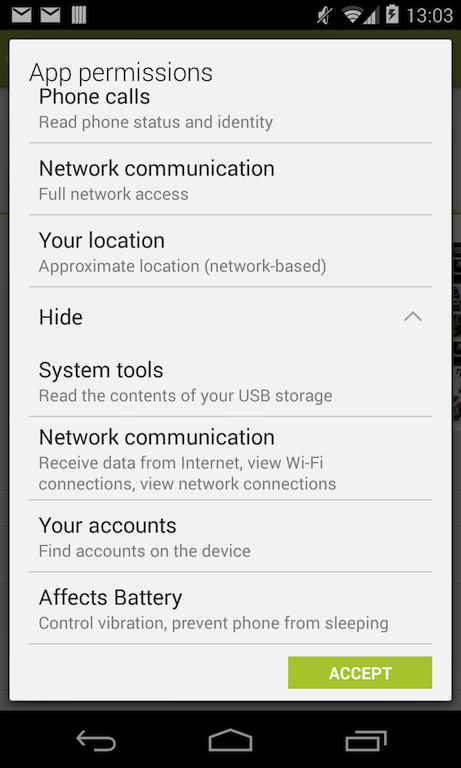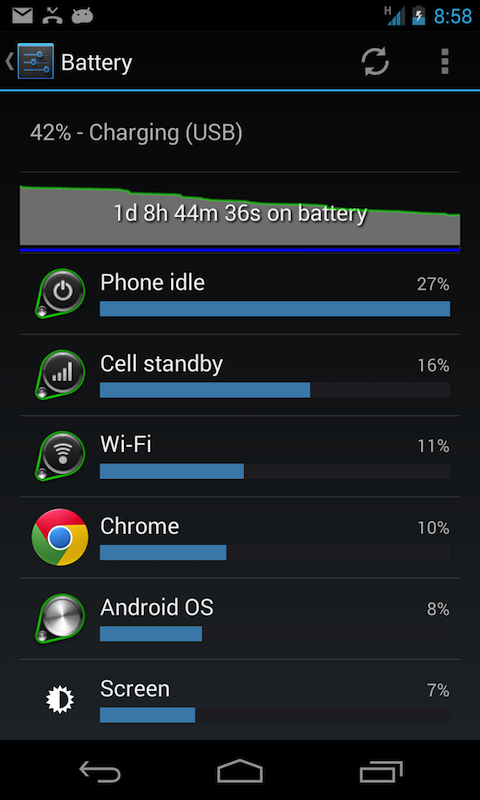Let me start out by saying I like my Android phones. I like developing for Android even with all the inherent version support issues, etc etc. So, in my previous post I brought up privacy issues related to installing Android apps along with a suggested fix. That post was inspired by a major change in Android v4.4.2 that removed “App Ops,” even though I didn’t mention it by name. The removal of that functionality is now a very visibility topic thanks to a number of high–profile bloggers such as the Electronic Frontier Foundation (EFF) who also have taken exception to this change.
In a nutshell, App Ops or its equivalent, would allow you to manually toggle individual application permissions on and off. You can search for articles on what App Ops is, or read my previous post on what it should be.
I’d take the issue of “control over what applications can access” even one step further and propose that it’s well past time that Google should begin reviewing Android app submissions similar to what Apple does for the App Store. Seriously. In combination with App Ops, or similar functionality, this could only help reduce the amount of nefarious practices, content, viruses, Trojans and more. Case-in-point: for the first this September, Kaspersky Labs reported a particularly sophisticated Trojan virus along with distribution mechanisms specially gift wrapped just for Android users. And, then again in November they announced an Android-specific financial phishing Trojan aimed at stealing banking usernames and passwords.
To get an idea of what is allowed on Google Play all you need to do is compare Apple’s App Review Guidelines with Google Play Policies and Guidelines. For example, searching the related Android Developer Content Policy for the term “review”, it only shows up once, and that is in regards to serving up advertisements.
My hope is that Google takes heed and makes some necessary and timely changes so that we can all continue to enjoy our Android devices safely and securely.

